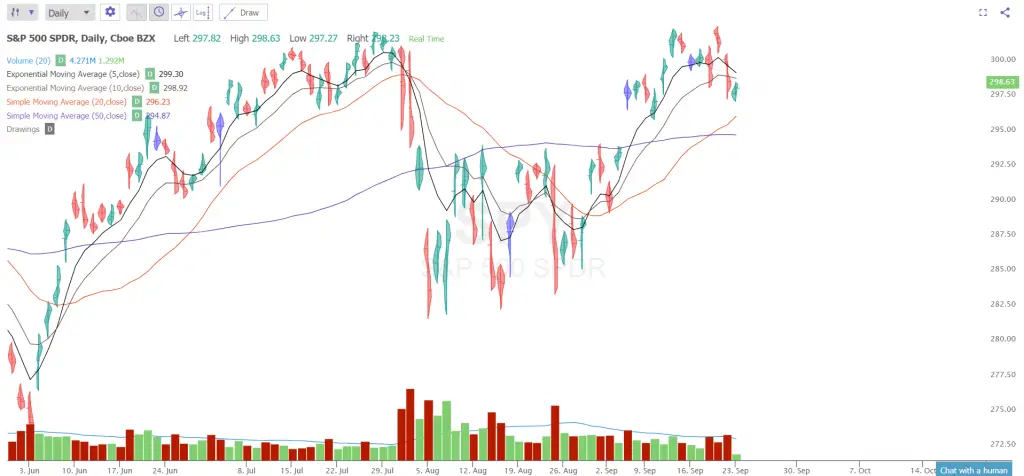I get asked all the time the question: “What moving average is better the simple moving average or the exponential moving average?” The answer to this is that it depends on the market you are trading and what your backtests show on your specific markets.
The simple moving average is just that, simply the moving average over the period of your chosen time frame. It is slow to react to changes in price action as each data point is just one of the total sequence of data points. On a 10 day simple moving average one day is weighted as one tenth of that moving average. The simple moving average is a slower signal to get you in and get you back out of a trade. It tends to work better on slower markets like market indexes and big cap stocks as they tend to move less in percentage terms and more time can be taken to get in and out in most situations. Also the majority of traders tend to use the simple moving average for longer term moving averages like the 50 day and the 200 day simple moving average so you can see more responses of buyers and sellers around those key lines because they are more popular than the EMAs on those time frames.
The exponential moving average is a faster moving average and gives more weight to recent prices than past prices and changes more quickly to adapt to the current market trend. The EMA starts with the SMA data but adds a multiplier to the more recent price data points than the past ones. The EMA calculations decreases the weighting of older price data and increases the weighting of newer price data based on how many days old the prices are. An EMA can work better in faster markets that move more in shorter time frames as it is more adaptive to present price data and will get you in and out quicker than an SMA. I have found better backtesting results on EMA crossover signals overall than SMA cross over signals in my hundreds of hours of backtesting moving average systems on the stock market.
What is the best moving average? If you are using long term moving averages like the 50, 100, or 200 day the simple moving average will likely give the most accurate level. If you are trading crossover signals then the exponential moving average will probably give you more of an edge by getting you in and out faster than a simple moving average when you look at the backtests for most markets.
If you are interested in seeing the backtesting data on moving average signals for both EMAs and SMAs you can check out my book here: 50 Moving Average Signals that Beat Buy and Hold.
Raindrop Chart courtesy of TrendSpider.com.
